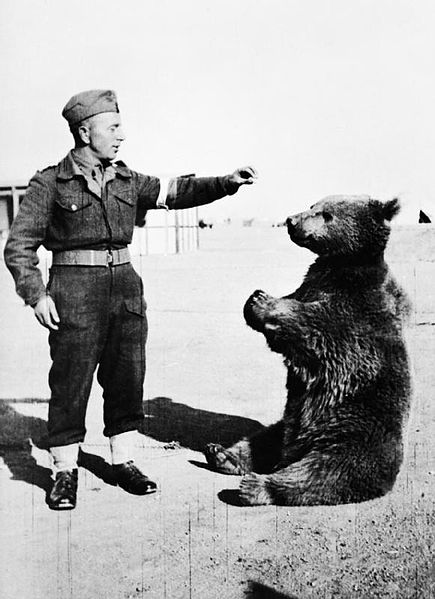Bearing Arms
In January of 1944, Europe was in the throes of war, and seemingly nothing (save perhaps for Switzerland) was outside its theater. About 80 miles outside of Rome was the abbey of Monte Cassino, a monastary dating back to the year 529. The Germans decided to not occupy the abbey in spite of its tactical value, as it was placed on top of a hill and made for an excellent location for lookouts. But American intelligence erroneously determined otherwise and bombed the abbey, reducing it to ruins. German soldiers then paratrooped in, and for the four months that followed, Allied and Axis battled over the region. All together, the two sides suffered casualties numbering as high as 75,000 as the Allies ultimately prevailed.
But the Battle of Monte Cassino is not only known for its relatively high casualty count nor the American intelligence failure. Another hallmark of the battle was the diversity of Allied troops who fought there. There were soliders from the United States, Great Britain, the French Underground, New Zealand, Canada, British India, Poland, some anti-Mussolini Italians, and even an Iranian. The Iranian’s name was Wojtek. Wojtek was a bear.
As in, a brown bear. He’s pictured, below, with a Polish soldier.

Wojtek was discovered by a local Iranian boy in 1942 when he was just a bear cub. The boy sold him to a group of men in the Polish Army who were engaged in battle in the region — apparently, the soldiers wanted a pet/mascot, and the boy wanted some of their rations. Wojtek quickly became one of the boys, even taking up cigarrettes, according the the Scotsman. (Wojtek did not just smoke them — he also ate them.) As his company moved throughout the Middle East, Wojtek became increasingly popular with the troops. But when British ships came to move the Polish Army into Italy, only enlisted men and officers were allowed on board. So the Polish Army did what somehow makes sense, in retrospect: they drafted Wojtek into service. He joined as a private in the 22nd Artillery Supply Company of the Polish II Corps.
As a private, Wojtek was no longer just a marmalade-loving curiosity — he had to live in the tents with his fellow enlisted men and, when duty called, press into battle. Being a bear, there were few jobs he could do. (Even if he were a super-intelligent bear — and there was no evidence that he was — he could not, for example, shoot a rifle, as bears lack opposable thumbs.) But, as legend has it, he actually did something useful during the Battle of Monte Cassino. Private Wojtek acted as a transport — moving heavy crates of artillery from the supply lines to the weapons. And according to the witnesses who swear that it happened, Wojtek did so perfectly, never dropping a single crate.
After the War, Wojtek found a permanent home in the Edinbugh Zoo. It became somewhat customary for Polish soldiers to visit him and, when they did, to toss him a cigarette — which Wojtek would then smoke. He lived to be 22 years old, finally passing on in 1963. To date, he’s the world’s only known war hero who happens to be a bear.
Bonus fact: American icon Smokey Bear was created by the U.S. Forestry Service to educate the public about the dangers of forest fires (and how to prevent them from occurring). By 1964, Smokey was receiving so much fan mail that the U.S. Postal Service issued him his own ZIP code. It’s 20252.
From the Archives: Brown Bear, Banned Bear: How a case of mistaken identity caused Texas to remove a book about a brown bear from school reading lists.
Related: “Wojtek the Bear: Polish War Hero” by Aileen Orr. One review, five stars.

Leave a comment